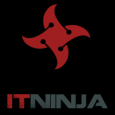WSUS vs. KBOX Patching
I'd really like to know about people's experiences switching to KBOX Patching from WSUS.
Thanks!
Answers (42)
As far as just WSUS vs KBOX, I think the biggest thing for us was the reporting. Our AD is not small, 3-4k computer objects. We have around 10 technicians spread around geographically. We image a LOT of PC's. 20-50 a day on non roll outs. As a result, our AD ends up with a lot of stale objects. This throws the WSUS reporting off quite a bit.
Obviously WSUS only handles Microsofts patches. Kbox handles other vendors, but sometimes can be slower to release some patches (sometimes, not always). WSUS has some capabilities such as rollup reporting that are not available on KBOX for orgs with multiple independant sites this could be a big deal. KBOX's interface is much simpler for some tasks and a migration to their patch system reduces the number of servers a guy has to maintain. If using KBOX you need to make sure to configure an updating GPO properly so users don't get notifications of thing Microsoft thinks you should have [but have been declined by you in KBOX]. If using WSUS you've probably already done this though.
As I said there are advantages and disadvantages to each- I think each network is a bit different. I'm still on WSUS due to lack of time or pressing need to switch, but will eventually. Functionally, for MS patches, I think both are equal on patching. It's more of an interface preference, and if you need some of the more obscure features only available from WSUS. If you haven't implemented anything, and you have a KBOX it's an easy choice.
Also if there is any Mac's in the environment you will want to have something that looks at those.
WSUS is a good option if you dont have dollars to spend but another good option with the KBOX is the OVAL feeds which give you the vulnerability scanning to show you where the vulnerabilities are coming from.
I'd love to go to KBOX for MS patching, but WSUS works great and we don't care if it blows up (takes no time at all to build a new WSUS server). We patch remote users with our WSUS server in the DMZ... This is really why we aren't using KBOX for patching - we have very important license and other asset information in our database that we do not want exposed to the outside world.
Why? Because if you support a few versions of each operating system and have both Macs and PCs, you're going to find the KBOX doesn't have enough physical disk space to store all patches for both. By removing the WSUS-delivered patches (using the feature called Limit Patch Subscription), you eliminate about 85% of the patches, saving a lot of disk space.
To save even more disk space, we're looking into setting up our own Apple Updates server, at which point the K1000 will deliver only application patches to both platforms.
Also, we see a real speed difference: WSUS has always delivered all the patches, to about 1200 machines, with no noticeable slowdowns, on either the clients or the server. Though we have spread machines across multiple KBOX patching schedules, we are struggling with KBOX patching being very slow, bringing clients to a crawl at some times. In my own informal testing, WSUS delivers a set of patches in about 1/10 the time it would take the KBOX to deliver the same patches. Maybe our K1000 is trying to do too many things at once?
We like the fact that the KBOX patches from Lumension have already been tested, so we have more confidence in their deploying correctly. (Despite this, we find a problem every couple of months.) Sande
WSUS can be within hours on a Patch Tuesday and patches deployed to the test-group tuesday night, prod-servers ready to be patched wednesday and thursday. This leaves a small time-window of unpatched servers.
With KACE you have to wait for Lumension to do their thing and release the patches, I am not aware of a time requirement when the patches are ready for us after they have been released by the vendor. This makes it more difficult to schedule, one solution is to sync patches every sunday and patch the test-servers sunday night. This increases the time window of unptached servers :(
Any thoughts or best practice out there?
ORIGINAL: snissen
...And if you look for the patch that is supposed to replace each of these, you won't always find one! (In other words, the Superseded field is not always marked correctly.) This is not common, but it does happen from time to time... Sande
Sande,
Howdy, Sande! I don't know if you remember me, but I've worked with you several times, while I was with KACE Support. About the issue you raised above: I believe instances of that happening should be limited to the lag between when a patch is marked as having been superseded, and when the replacement patch actually gets to your KBox (after being vetted by Lumension, etc.). r2
I think KACE has some unique advantages when compared directly to WSUS. Leaving out the 3rd party patching capabilities, you have a lot more flexibility with automating your approvals and deployment strategy for patching. For example, I have about 6 distinct regions that range from our test group all the way up through our production environment. The test group gets patches nearly immediately, and the production environment patches roughly once/month. With KACE, I can have different patching schedules for each of my regions that are in compliance with our patching policy that require little to no intervention on my part. I hope this helps.
I think KACE has some unique advantages when compared directly to WSUS. Leaving out the 3rd party patching capabilities, you have a lot more flexibility with automating your approvals and deployment strategy for patching. For example, I have about 6 distinct regions that range from our test group all the way up through our production environment. The test group gets patches nearly immediately, and the production environment patches roughly once/month. With KACE, I can have different patching schedules for each of my regions that are in compliance with our patching policy that require little to no intervention on my part. I hope this helps.
I understand what you're saying. We ran into the same situation. Like Adobe Reader - we wanted reader to be updated automatically by KACE, but have it's updater and other junk turned off. So, what we do is allow KACE to install the full blown Reader version then allow KACE to turn off that junk either via MI or Scripting. We do this because even if we download Reader and customize it, some user will download it themselves and install the full blown version and all it's junk. At least with the scripts or MI KACE can search (with labels and filters)for the version and remediate the application. It works like a charm - hardly any touching or hand-holding.
Hope this helps,
Dave
Digging into these we discovered that the 4 other patches were actually listed in the KBOX s application patches as they were linked to Outlook Express, IE 8, Flash player and Dot net 1.1. We didn't have application patching turned on so they didn't show up as active.
It took only 21 minutes and a single reboot to use WSUS and took 24 minutes with a single reboot for the KBOX to complete its patch cycle. The KBOX does do a patch verify cycle to make sure the patches have actually been applied.
The KBOX uses a fingerprint profile scan to verify that patches have been applied correctly which could account for the extra time. These tests were done on virtual machines so may vary in speeds compared to actual clients...
I have not had any problems with the KBox patching other then it being setup wrong initially. Every patch was set to go into a certain label. We were unaware of this and clicked on the box that said to download software installers. When the software installers downloaded, it actually put them in the label that we were using to deploy patches every Saturday. Well, when we came in Monday morning, every computer in the building had six different versions of Adobe, Citrix, Shockwave, Novell, iTunes, Firefox, Safari, VMware, and QuickTime installed on them. That was a nightmare! I turned off patching and started from scratch again because at the time we did not know why it did that. I will say however, good did come out of it. I really got to get my feet wet in scripting. I spent an entire week making uninstall scripts trying to uninstall all of that software. Therefore, in the end, it was a great learning experience and now I am pretty familiar with the scripting aspect of the KBox.
Other than that, I would have to say using the patching feature has really helped us out and we have not had any problems with it. The nice thing is that not only does it patch Microsoft software but it also patches other applications as well. With our small IT department, we do not have time to patch software. We did notice the other day that the KBox was not patching all the Microsoft vulnerabilities. It was showing completed while the Microsoft update still showed patches that needed to be installed. I am unsure why but that will be another project in the near future. We are just happy to get some patches out to the PCs.
Comments:
-
That is reassuring to know. I am at this time being very specific as to where updates are being run and have been testing a specific lab. It is nice to know some of the changes have occurred and it is quicker. I will continue to roll forward using Dell KACE for updates. - Cindy Kaldunski 8 years ago
It would be nice if I could just pick up the phone and talk to someone at KACE, but it seem I always end up being asked to leave a message to create a ticket. Troubleshooting via email is very slow. I get a message from them, then I respond and it's at least the next day before I hear back from them. That's way too slow to resolve any issues. Dissappointing. Methinks KACE needs more tech support reps.
Also, you can submit a ticket and request Kace support to call you back. I have talked to Kace multiple times to solve issues. If I wasn’t around my phone, they would leave a voicemail with a number to call them back on. When I did, someone always answer for me. If the tech person was busy, he would call me right back.
After a good bit of time with KACE Support. We finally found out that KACE does NOT patch any Microsoft patch that Lumensions/Patchlink considers non-critical. This is a complete and utter fail in my book. Especially based on the sales pitch we got about KACE Patch management.
I honestly think for complete patching something like Shavlik, is a better option considering they do patch everything.
Just curious if anyone else has similar opinions.
I do agree with you that our short term solution is to use WSUS for Microsoft updates and KBOX for Adobe/Java/etc... updates. But I think the ultimate solution will be to drop the KBOX completely for a solution that's more complete. I've actually already been in contact with our Dell rep and KACE 'specialist' who doesn't seem to think this should be the case. But I've assured them this is what I was told. I'll also point them to this thread.
As for approvals, we're using a lot of automatic approvals. On our WSUS server, all critical and security patches are automatically approved, so I never have to touch those. I only have to approve the recommended patches, and that only once a month, on Patch Tuesday.
On our K1000 server, we do not individually review and approve patches--we just take them as they are. That's why the Lumension testing is so important. We find we only need to fiddle about once every few months, when one of the Lumension patches causes a problem (example: Adobe Shockwave on Mac OS X) and we need to disable it.
Trusting souls, aren't we? Sande
Not sure whether the way round is to download all updates and create a batch file calling the updates with /passive /noreboot switches
Any help is much appreciated
One alternative is to run K1000 for patching and then have WSUS as a backup for any patches K1000 misses. Nasty and double-config, but possible.
ORIGINAL: ronco
stephen.frost,
Can you elaborate on your reasons for potentially abandoning MS patching via your KBox? r2
One of my reasons for being sceptical is that Dell/Lumensions decides which patches is available and when. There is no fixed timeline for when a critical patch is available, or that it even will be available. In the past Dell/Lumensions have decided to not make a critical MS patch available with no real explanation.
This process is not open and transparent and the only reason I trust it (for now) is because of the Dell name.
adobe reader
Java
are updated via KACE. To disable autoupdating of these applications we push reg keys via GPO to client machines as well. We don't want adobe looking to the manufacturer every 1 month or so.
Our setup
1 - install adobe with a MI
2 - disable the autoupdates with Group policy
3 - use patch schedules to update the versions of this software when kace downloads them.
this allows us to get around the no users being local admin problems.
So this was the plan. Get this product setup and managing our systems, imaging, ect. Then we would have time to call DELL back and do a big DELL VMWare Infrastructure build…After all, KACE was going to free up extra time. Our plan now…Well, my manager will not allow me to call DELL. Have to call someone other than DELL for the VMWare project. If we ever find time to begin moving forward again.
Our intent was to use the system to perform all patching (MAC, Windows, and Apps). After downloading just the patches for Windows and Apps, we found out about the space problem. Now we’re finding out about the slowness. And we already knew about the Support problems. Not the answer to all problems that we were sold on. And the simple to use interface…Well, WSUS seemed to be pretty simple and can be set up in a day. How different can KACE be? I’ve been struggling with this for several days and it’s just been disappointing.
We will have to continue to use WSUS (simple, and simply works) for windows, and only use KACE for apps. We will use KACE to perform “patch catch-up†after all scripted installations. We can just leave it overnight, then let WSUS take care of missed patches later. We may also use KACE to report un-patched systems…not sure yet. There is no way this agent will be placed on the servers. Which removes another intended use.
I really want to like KACE, but at the moment, I’m very far from it…but trying.
Sorry for the negative post, but all of the sudden I didn’t feel alone, and was compelled to share.
I can offer a LOT of help with the patch disk space problem. Patch Smart Labels can be configured (and added to your Subscription Settings page) to cut out an absolute metric ton of patches that you don't actually need. Also, don't forget that we have two weekly KACE Kontinuing Education sessions. They are all recorded and posted on our KKE site for you to review, if you are unable to make it to the live presentation. We have several on patching, both past recorded sessions and upcoming live ones. r2
After all systems have checked in, and a task ran against them to detect needed patches, then labels become an option.
In our case, we are not replacing an established patching system. We were depending on KACE to get us where we need to be. That may still be the case, but we will have to contend space issues until all systems are properly managed.
I would be great if KACE had something like a definition file defining all patches that patchlink knows about and can manage. Use that definition file for detection purposes. At that point, then you could use that information to build an intelligent labeling system to begin downloading patches.
If you know of a way to achieve that, I would LOVE to hear it.
I deleted our entire patch database all 120Gb of it, then while testing I wanted to just have it download ONLY adobe patches, nothing else. The trouble is if you wipe the database and try and make a patch label, you can't actually filter any patches because there is no patches to filter on....
we ended up just downloading all 120Gb worth of patches. Probably not the best solution but it works. I don't want to download MS patches, because we have wsus for that already.
Also, how does the system determine what 'unused patches' are? on the patch settings screen there is 'delete unused patches' what does 'unused' mean and how is that determined?
On the Security > Patching > Subscription Settings page, you can UN-check the Hide Disabled Patches on Patch Listing setting. Then, it doesn't matter if you have patches downloaded or not - you'll be able to "test" your patch labels as you build them. Delete Unused Patches is a combination of a few patch states. The largest quantity, though, is unsubscribed patches. For instance, if you unsubscribe from an OS on the Security > Patching > Subscription Settings, all of that OS's patches you've already downloaded will then be "unused", and you can delete them.
What Adobe apps (and versions!) do you need to patch? I'd be happy to tell you what criteria I'd use to build the patch label. r2
I will note two things we learned:
1) Do not have any logic in your patch subscription queries about the Active/Inactive/Disabled status of the patches. It won't work.
2) Be very careful in your patch subscription queries about using the Superseded status of patches. If you use Advanced Search under Patch Listing, you will find there are patches marked Superseded that are still Active. And if you look for the patch that is supposed to replace each of these, you won't always find one! (In other words, the Superseded field is not always marked correctly.) This is not common, but it does happen from time to time. The result is, if you eliminate Superseded patches from your subscription, you may occasionally miss a patch. We encountered this first with Adobe Flash Player 10 patches for Windows. Sande
I want to reiterate that. KACE will not patch anything that Lumension does not consider critical.
Outside of this one area, KACE is a great product, but this patch ordeal has put an extremely bad taste in my mouth.
 Rating comments in this legacy AppDeploy message board thread won't reorder them,
Rating comments in this legacy AppDeploy message board thread won't reorder them,so that the conversation will remain readable.















